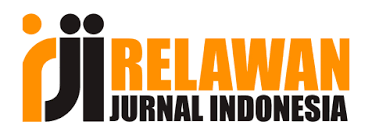Institutional Reforms for Environmental Sustainability in Uzbekistan
DOI:
https://doi.org/10.17605/cajssh.v4i12.987Keywords:
Green economy, environment, sustainable development, environmental education, social protection, institutional reforms, comprehensive strategies, UzbekistanAbstract
This article highlights the vital connection between environmental safety and national security, stressing the urgency to safeguard both the environment and human well-being from potential harm caused by human activities. It emphasizes the global call to action through Sustainable Development Goals (SDGs) for enhancing well-being and planet protection. The study identifies key sustainable development elements - economic growth, social protection, environmental security, moral revival, institutional reforms, and legal foundations - as intertwined and mutually enhancing. It underscores a "green" economy, social protection measures, and comprehensive strategies for environmental safety involving legislative, technical, managerial, and biological aspects. The article discusses varying levels of environmental threats and their effective management. The role of institutions, legal bases, international collaboration, and strategic priorities for Uzbekistan's environmental security are highlighted. It concludes by stressing a comprehensive approach, involving stakeholders, to ensure a sustainable environment for future generations.
References
Aleksandrova, M., 2020. Principles and considerations for mainstreaming climate change risk into national social protection frameworks in developing countries. Clim. Dev. 12, 511–520.
Alfirević, N., Malešević Perović, L., Mihaljević Kosor, M., 2023. Productivity and Impact of Sustainable Development Goals (SDGs)-Related Academic Research: A Bibliometric Analysis. Sustainability 15, 7434.
Ambec, S., Lanoie, P., 2008. Does it pay to be green? A systematic overview. Acad. Manag. Perspect. 45–62.
Cho, Y., Margolis, D.N., Newhouse, D., Robalino, D.A., 2012. Labor markets in low and middle- income countries: trends and implications for social protection and labor policies.
Gasparatos, A., Doll, C.N., Esteban, M., Ahmed, A., Olang, T.A., 2017. Renewable energy and biodiversity: Implications for transitioning to a Green Economy. Renew. Sustain. Energy Rev. 70, 161–184.
Goodland, R., 1995. The concept of environmental sustainability. Annu. Rev. Ecol. Syst. 26, 1–24. Kovač, A., Paranos, M., Marciuš, D., 2021. Hydrogen in energy transition: A review. Int. J. Hydrog. Energy 46, 10016–10035.
Kutsyuruba, B., Klinger, D.A., Hussain, A., 2015. Relationships among school climate, school safety, and student achievement and well-being: a review of the literature. Rev. Educ. 3, 103–135.
Lioubimtseva, E., Cole, R., 2006. Uncertainties of climate change in arid environments of Central Asia. Rev. Fish. Sci. 14, 29–49.
Loiseau, E., Saikku, L., Antikainen, R., Droste, N., Hansjürgens, B., Pitkänen, K., Leskinen, P., Kuikman, P., Thomsen, M., 2016. Green economy and related concepts: An overview. J. Clean. Prod. 139, 361–371.
Massey, A., Johnston-Miller, K., 2016. Governance: public governance to social innovation? Policy Polit. 44, 663–675.
Mori Junior, R., Fien, J., Horne, R., 2019. Implementing the UN SDGs in universities: challenges, opportunities, and lessons learned. Sustain. J. Rec. 12, 129–133.
Muradov, N.Z., Veziroğlu, T.N., 2008. “Green” path from fossil-based to hydrogen economy: an overview of carbon-neutral technologies. Int. J. Hydrog. Energy 33, 6804–6839.
Owen, R., Brennan, G., Lyon, F., 2018. Enabling investment for the transition to a low carbon economy: Government policy to finance early stage green innovation. Curr. Opin. Environ. Sustain. 31, 137–145.
Pan, S.-Y., Gao, M., Kim, H., Shah, K.J., Pei, S.-L., Chiang, P.-C., 2018. Advances and challenges in sustainable tourism toward a green economy. Sci. Total Environ. 635, 452–469.
Panwar, N.L., Kaushik, S.C., Kothari, S., 2011. Role of renewable energy sources in environmental protection: A review. Renew. Sustain. Energy Rev. 15, 1513–1524.
Parkin, S., 2000. Sustainable development: the concept and the practical challenge, in: Proceedings of the Institution of Civil Engineers-Civil Engineering. Thomas Telford Ltd, pp. 3–8.
Semieniuk, G., Campiglio, E., Mercure, J.-F., Volz, U., Edwards, N.R., 2021. Low-carbon transition risks for finance. Wiley Interdiscip. Rev. Clim. Change 12, e678.
Sorg, A., Bolch, T., Stoffel, M., Solomina, O., Beniston, M., 2012. Climate change impacts on glaciers and runoff in Tien Shan (Central Asia). Nat. Clim. Change 2, 725–731.
Swanwick, C., Dunnett, N., Woolley, H., 2003. Nature, role and value of green space in towns and cities: An overview. Built Environ. 1978- 94–106.
Tleuken, A., Tokazhanov, G., Jemal, K.M., Shaimakhanov, R., Sovetbek, M., Karaca, F., 2022. Legislative, institutional, industrial and governmental involvement in circular economy in central Asia: a systematic review. Sustainability 14, 8064.

















